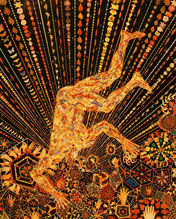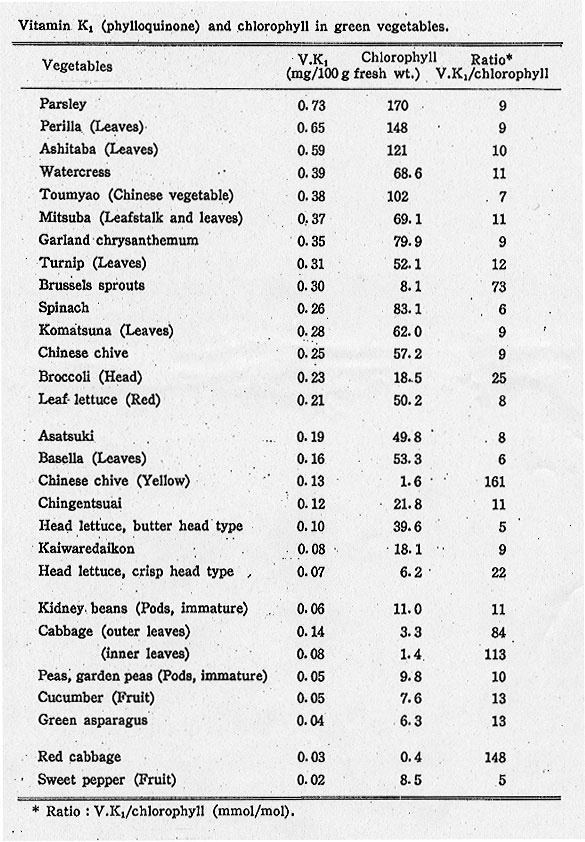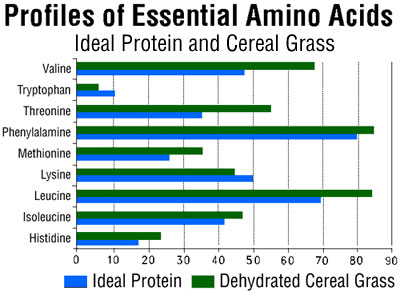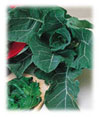

| VITAMIN K or pass the beef broccoli, hold the beef. |
|---|
Sometimes with PLD polycystic liver disease our bilirubin rises, our bleeding time becomes prolonged, and our creatinine shows decreased kidney functioning. These are all things within the USA that can make us more eligible for liver transplant. Some of us have malabsorption as well as cystic organ disease and we bruise and bleed easily. This can be a symptom of decreased Vitamin K. Perhaps if you have malabsorption troubles, liver cysts, and bruise easily it might be prudent to get a blood test of your bleeding time and prothrombin time from your doctor.
ARTICLES VITAMIN K
Vitamin K food sources or vitamin
K oil, both equal for younger and older adults.
Vitamin
K bone health impressively been used to prevent further bone mineral loss
and fracture risk in osteoporotic patients.
Vitamin
K bone health review of supplementation trials comparing vitamin K with
Calcium and vitamin D showed an additional effect of vitamin K against baseline
levels of bone mineral density, but the benefit was only seen at one bone site.
Vitamin K food sources from the
USDA. This is really funny. After reviewing this chart, it seems I could have
had a beer instead of kale.
Vitamin K food sources. Here
is a fun
site, called the Vitamin K Registry. You can key the food and it will tell
you much vitamin K is in that food item. To download the list of foods (there
are 1000) click here. If you
have any questions send an email.
| Dr.
Marie Hogan's lecture on Polycystic Liver Disease Model for End-Stage Liver Disease (MELD) Numerical system that ranks (from 6 to 40) patients waiting for a liver based on three lab test results: Bilirubin (how effectively the liver excretes bile) INR (prothrombin time, ability to clot blood) Creatinine (kidney function) Symptomatic Polycystic Liver Disease Nonsurgical Treatment Options Avoid estrogens, caffeine H2-blocker or H+/K+ ATPase inhibitor Long-acting octreotide (?) mTor inhibitors (?) Long Acting Octreotide Clinical Trial (Mayo Clinic) Prospective, double blind, placebo controlled (2:1), 42 patients Octreotide LAR 40 mg IM every 4 weeks Primary endpoint: % change in liver volume at 12 months (MRI) Secondary endpoints: % change in kidney and liver/renal cyst volumes Patient Characteristics Age = 18 years PLD associated with ADPKD or isolated ADPLD Liver volume >4000 mL or symptomatic due to mass effects Not a candidate for or declining surgical intervention Serum creatinine <3 mg/dL No exclusion criteria (pregnancy, major illness, uncontrolled DM) |
Vitamin K was discovered by Danish scientist Henrik Dam who named it the Koagulation vitamin. In 1920 he investigated the role of cholesterol by feeding chickens a cholesterol-depleted diet. After several weeks, the animals developed hemorrhages and started bleeding. These defects could not be restored by adding purified cholesterol to the diet. It appeared that together with the cholesterol a second compound had been extracted from the food, and this compound came to be called the Koagulation vitamin or vitamin K. The new vitamin received the letter K because the initial discoveries were reported in a German medical journal where coagulation is spelled with a K.
vitamin K molecule Normally Vitamin K is produced by bacteria in the intestines. Dietary deficiency is extremely rare unless the intestines are heavily damaged. Adequate gut flora is necessary to produce Vitamin K. Dark green vegetables are the best dietary source of vitamin K.This is associated with the chlorophyll in the chloroplasts of green plants. Vitamin K comes in three forms: plant based vitamin K1 and vitamin K2 , these have no toxicity associated with them. Avoid using vitamin K3, the synthetic form, which can cause liver toxicity. |

There has been recent activity in testing vitamin K for the prevention of arthritis
and for reducing the severity of bone degeneration. Tuhina Neogi, of Boston
University School of Medicine found that low levels of vitamin K in individuals
activated bone and cartilage deterioration. Chronically low levels of vitamin
K are correlated with higher risk of hip fracture in older men and women, and,
those found with low vitamin K also had more severe arthritis. A study done
in 2003 reported that the current recommended dietary intake for vitamin K in
adults may not be adequate for older women. Vitamin K is needed for the modification
of certain proteins required for blood coagulation.
Vitamin K-deficiency may occur by:
1. Malabsorption of Vitamin K from the
gut, disturbed intestinal uptake (such as would occur with a bile duct obstruction)
2. Therapeutic
or accidental intake of blood thinners, coumadin, vitamin K-antagonists.
3. Nutritional vitamin K-deficiency,
lack of eating foods rich in Vitamin K
SOME CAUSES FOR VITAMIN K DEFICIENCY
People taking antibiotics–In addition to killing harmful
bacteria, antibiotics also destroy the healthful bacteria that live in the intestines
and produce needed vitamin K.
People with liver disorders–The liver plays an important
role in metabolism and storage of vitamin K. Persons with severe liver disease
may require vitamin K supplementation to avoid complications of bleeding or
bruising.
In the adult, low dietary intake may be due to chronic illness, malnutrition,
alcoholism, multiple abdominal surgeries, long-term parenteral nutrition, malabsorption,
cholestatic disease, parenchymal liver disease, cystic fibrosis, inflammatory
bowel disease, and drugs (eg, antibiotics [cephalosporin], coumadin, salicylates,
anticonvulsants, certain sulfa drugs) are some of the common causes of vitamin
K deficiency. Two (2) main sources of vitamin K exist, neither the dietary deficiency
nor the gut sterilization produces significant coagulopathy in a healthy person.
As a result of the acquired vitamin K-deficiency, Gla-residues are not or incompletely
formed and hence the Gla-proteins are inactive. Lack of control of the three
processes mentioned above may lead to the following: risk::
1. Uncontrolled and massive bleeding
2. Cartilage calcification and severe
malformation of developing bone
3. Deposition of insoluble calcium salts
in the arterial vessel walls.

Food |
Serving Size |
Vitamin K amounts in (micrograms) |
| Spinach (fresh/frozen, boiled) | 1/2 cup | 360 |
| Brussels sprouts (fresh/frozen, boiled) | 5 sprouts | 289 |
| Broccoli (fresh/frozen, boiled/ steamed and chopped) | 1 1/2 cups | 339 |
| Cabbage (fresh, boiled) | 2/3 cup | 98 |
| Asparagus (fresh/frozen, boiled) | 7 spears | 80 |
| Kiwi fruit | 1 medium | 20 |
| Avocado | 1 small | 14 |
| Olive Oil | 1 Tbsp | 6.62 |
| Watercress, raw | 1/2 cup chopped | 40.4 |
| Cabbage raw | 1/2 cup shredded | 48.3 |
| Turnip greens raw | 1/2 cup chopped | 66.8 |
| Lettuce red leaf | 1/2 cup shredded | 55.9 |
| Pistachio nuts | 1/2 cup | 42.6 |
| Snap beans, raw | 1/2 cup | 24.6 |
| Plums | 1/2 cup slices | 18.8 |
| Kiwi fruit | 1 medium | 19 |
| Green peas, cooked | 1/2 cup | 17.5 |
| Carrots cooked | 1/2 cup sliced | 13.3 |
| Almond Butter | 2 Tbsp | 7.2 |
| Cauliflower, boiled | 1/2 cup | 5.89 |
| Cucumbers raw | 1 medium | 5.72 |
| Parsley raw | 1/4 cup | 300 |
| Purslane | 3 1/2 ounces | 380 |
| Endive | 3 1/2 ounces | 270 |
| Pistachio | 3 1/2 ounces | 170 |
| Swiss Chard boiled or steamed | 1/2 cup | 360 |
| Wheatgrass or Barleygrass or Kamut grass juice | 1 ounce | 282 |
Food |
Serving |
Vitamin K (mcg) |
| Olive oil | 1 Tablespoon | 6.6 |
| Soybean oil | 1 Tablespoon | 26.1 |
| Canola oil | 1 Tablespoon | 19.7 |
| Mayonnaise | 1 Tablespoon | 11.9 |
| Broccoli , Cooked | 1 cup (chopped) | 420 |
| Kale, raw | 1 cup (chopped) | 547 |
| Spinach, raw | 1 cup (chopped) | 120 |
| Leaf Lettuce, raw | 1 cup (chopped) | 118 |
| Swiss chard, raw | 1 cup (chopped) | 299 |
| Watercress, raw | 1 cup (chopped) | 85 |
| Parsley, raw | 1 cup (chopped) | 324 |
VITAMIN K
- PLANT BASED FOODS high in vitamin K |
| Broccoli | Mustard, collard, turnip greens | Kale |
| Spinach | Cabbage | Wheatgrass juice, barley grass juice, kamut grass juice |
| Red Leaf Lettuce | Coleslaw | Sauerkraut |
| Olive Oil | Swiss Chard | Highly green leafy vegetables filled with chlorophyll |
VITAMIN K
- ANIMAL BASED FOODS high in vitamin K also high in cholesterol |
| Liver | Bacon | Egg yolk |
| Butter | Cheese, cottage cheese | Full fat yogurt |
VITAMIN K
- moderate in vitamin K |
| Green peas | Green Beans |
| Asparagus | Cucumber (dill pickle) |
VITAMIN K
- low in vitamin K |
| Apples, applesauce | Orange | Potato |
| Peach | Strawberry Blueberries | Oats |
| Banana | Tomato | Bread |
| Raisin | Carrot | Rice |
References:
1 Cushman M et al., The association of vitamin K status with warfarin sensitivity
at the onset of treatment, Br. J Haematol, 2001; 112:572.

Comparisons of Cereal Grass Protein to Ideal Protein
Milligrams Amino Acid per Gram of Protein
Cereal Grass Juice
Wheatgrass Juice - Kamut Barley Wheat Spelt
The following data on the nutrients contained by the first joint stage of wheatgrass
(7-10" tall) is taken from a report Dr. C.F. Schnabel given to the American
Chemical Society. NUTRIENT MILLIGRAMS PER POUND (453.59G) Chlorophyll 5,000
mg, Choline 4,000 mg, Vitamin C (ascorbic acid) 2,000 mg, Vitamin A (carotene)
360 mg, Vitamin E 120 mg, Vitamin F 120 mg, Vitamin K 120 mg, Niacin (B group
vit) 120 mg, Vitamin B2 (riboflavin) 24 mg, Vitamin B1 (thiamine 12 mg, Pantothenic
acid (B group vit) Vitamin B6 4 mg. Wheatgrass juice boasts 60% of the body's
recommended daily allowance for vitamin K in a one-ounce shot and 120% in a
two-ounce shot.

A large number of foods were tested at the University of Wisconsin to determine
which of them contained the highest levels of the Grass Juice Factor.113 The
best sources were found to be dehydrated cereal grass, young white clover, peas,
and cabbage.
Here is a little story about Dr. Schnabel and his chickens.
Dr. Schnabel first tried increasing the amount of alfalfa fed to chickens, but
found that diets consisting of more than 10% alfalfa were harmful to hens. He
then tried supplementing the chicken feed with various combinations of twenty
vegetables, primarily green vegetables. All were "found wanting" and
did not achieve the blood-building effects sought by Dr. Schnabel. In 1931,
feeling frustrated and about to give up his search, he gave the experimental
hens a "greens mixture," which "just happened to contain a large
amount of immature wheat and oats." Chickens given a ration containing
only 10% of this cereal grass responded dramatically. Winter egg production
rose from the average 38% to an astonishing 94%! Not only were more eggs produced,
but those eggs had stronger shells and were more likely to hatch healthy chicks.
The chickens were free of the usual degenerative diseases associated with poultry
production. Their combs were bright scarlet red, and their legs never lost their
pigment. He reported that "even a child can see the bloom of health in
the grass-fed hens, as compared to the alfalfa-fed hens, though science, as
yet, cannot explain it".
Dr. Schnabel studied many aspects of growth and nutrition associated with cereal
grasses. He found that some soils were not suitable for providing high quality
cereal grasses, and that the nutrients provided by these green plants varied
with the stage of growth of the grasses. He gave the dehydrated grasses, an
economical and practical food supplement, to his family of seven. As reported
in the Buffalo Courier Express,14 none of his children ever had a serious illness
or a decayed tooth. He devised a plan to provide the hungry nations of the world
with a high quality protein supplement derived from cereal grasses.
In the mid 1930s, at the University of Wisconsin, Dr. George Kohler and his
colleagues were studying the differences in the nutritional value of cow's milk
produced at different seasons of the year. In France butter that is produced
from cows milk who eat the first young blades of grass in the spring is highly
prized. Although animals thrived on summer milk, experimental rats and guinea
pigs failed to grow and eventually became sick and died when fed winter milk.
The higher nutritional value of the summer milk was found to be due to the grasses
eaten by the cows in the spring and summer. Thus began research on the "Grass
Juice Factor", a water soluble extract of grass juice which was responsible
for this growth effect.
Before synthetic vitamin supplements were available, people took grass tablets
to supplement diets which they considered to be inadequate. Doctors gave grass
tablets to patients with nutrient deficiencies, or for specific health conditions.
Vitamin K foods (leafy greens, spinach, kale, bacon, butter, cheese, egg yolk)
all will cause the blood to clot or to bleed less. Normally Vitamin K is produced
in the intestines. A deficiency creates bone weakness and less dense bones that
are more prone to fracture.
ADDENDUM
You might be wondering why such an interest in Vitamin K? Back from my 9th injection of octreotide/placebo and a yearly check up. Everything looks good. My serum creatinine is 0.8 mg normal. My virtual colonoscopy - normal. My breast MRI - normal. I will get a mammogram in August 2008 and at that time will get a molecular breast imaging study done. This is a clinical trial conducted at the Mayo. I have matted spider telangectasias sclerosed.
Two studies were a little abnormal: my bone density showed osteopenia and my bleeding time is prolonged. Could the two possibly be related?
My bone density shows osteopenia for the first time. My anemia
is corrected and normal. My iron, B12, folic acid are all normal in fact super
normal. I have discovered that I cannot take potassium citrate and still continue
on the octreotide clinical trial so I have stopped potassium citrate. My vitamin
D (three different types were measured) are all a little low at 32. So I am
taking calcium citrate 3 tablets with vitamin D. All my liver functioning and
kidney functioning looked good except my bleeding time and prothrombin times
are both prolonged. I have agreed to do a three week trial of eating high vitamin
K foods then re-check my bleeding time and prothrombin times to see if these
improve. I will get a repeat bone density in one year’s time.
The bowel prep for the virtual colonoscopy was done with something called golytely.
By mistake I had been on clear liquids for 4 days prior to my examination. I
think this is what saved me. I could only manage to get one cup down of the
golytely. I needed to drink 16 cups. It kept coming back up. I went early and
explained everything to the radiologist. They used air to inflate my intestines;
shot a few images and said it was a go. Next time there is another easier prep
called movie prep. This requires drinking only 8 cups of fluid.
My main problem is my bleeding time. Deep dark green vegetables are the best
dietary source of vitamin K usually found associated with chlorophyll in the
chloroplasts of these green plants. Vitamin K was discovered in 1935 by a Danish
scientist who named it the "Koagulation" vitamin. It is one of the
fat-soluble vitamins, one which we normally don't hear much about. This may
be because vitamin K is synthesized by the healthy flora in the large intestine.
Vitamin K deficiencies are rare in humans.
In 1935 several foods were tested at the University of Wisconsin to determine
which contained the highest level of this grass juice factor. The greener the
vegetable, the higher the vitamin K content, say researchers, because vitamin
K is associated with the chlorophyll. The best sources turned out to be cereal
grass (like wheatgrass), peas, and cabbage juice.
Recently Tuhina Neogi, of Boston University School of Medicine found low levels
of vitamin K activated bone and cartilage deterioration. For many reasons I
have agreed to eat the following:
Broccoli
Egg yolk
3/4 ounce of goat cheese
Green leafy vegetables
Cabbage juice with almonds
I am also including spinach, kale, cauliflower, brussels sprouts, endive, olive
oil, avocado, collard greens, mustard greens, red leaf lettuce, wheatgrass juice,
butter, kiwi, cucumbers, peas, asparagus, coleslaw, and watercress. I have written
Manitoba Farms to see if they know the vitamin K content of hemp seed oil caps.
Bacteria in the large intestines help by making a range of vitamin K forms called
menaquinones. Vitamin K is also produced by plants (phylloquinone). Manmade
vitamin K found in supplements is called menadione. Even from a site that is
a detractor of wheatgrass, they wrote about the high vitamin A and vitamin K
content that one ounce of wheatgrass juice would provide the daily requirement
of Vitamin K.

Collard Greens
Last updated Sunday, January 4, 2009 8:42 PM